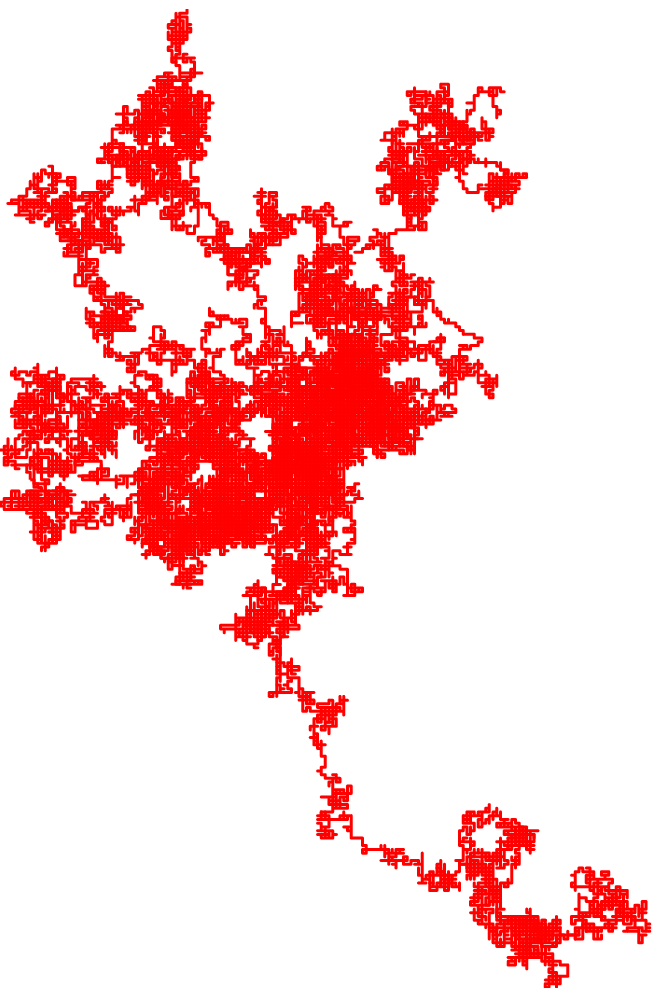
The researchers observed animal movement patterns. As animals ranging from marine predators to monkeys search for food, they move in a pattern called ‘Lévy motion’. This is a variation of a ‘random walk’ (successive random steps) in which longer flights of motion are separated by shorter jumps. Because individual cells must find food and oxygen as they travel through tissue, the scientists expected to find the same pattern of movement internally.
To test this, Alka Potdar, a co-author on the study, cultured human mammary epithelial cells and closely observed their movement across plastic plates. These cells move only a micron (one millionth) of an inch per minute, and Potdar was interested not in the total distance moved, but in plotting every change of direction along the way. Luckily, she could use time-lapse video-microscopy, otherwise I’m not sure whether she’d have gone mad or blind first.
In any case, Potdar found that the cells did not use a Lévy random walk, but the closely related 'bimodal correlated random walk' (BCRW). In this movement pattern, the cells travel in one direction, then pause briefly as if to reorient themselves before moving again.
No comments:
Post a Comment